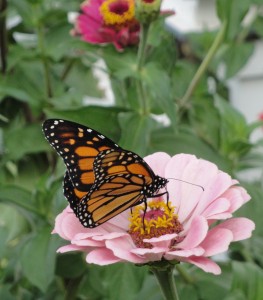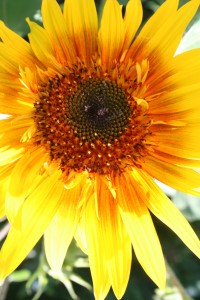Starting Annuals from Seed
While many gardeners enjoy starting vegetables from seed, starting annuals from seed is fun and easy, too. Some tender annuals — zinnias, marigolds, calendulas, salvias, cosmos, morning glories, nasturtiums, sweet alyssum and sunflowers, for example — are quick to germinate and grow, whether in the garden or indoors. Some of them also lend themselves to seed saving, which makes them great choices for budget-conscious gardeners or those who want to grow a lot of plants.

If you wish to start the seeds indoors, follow a similar procedure to that you would use to start tomatoes, lettuce and other vegetables. You will need a strong light source — either a sunroom or very sunny window or a simple set up using florescent lights. Check the back of the package to see when to start the seeds indoors. Typically, annuals should be started anywhere from three weeks to six weeks before the last frost date. For most of Minnesota, that is between May 5 and May 30.
Plant the seeds in a potting soil or seed starting mix — not soil dug up from the garden. You can buy potting soil at the garden center or make your own. Some annuals will germinate very quickly — a few days — which make them a fun project to do with children. Others may take awhile, but give them time. Once the plants have germinated and have their first set of “true leaves,” you can slowly raise the lights. You may even want to apply some very dilute liquid fertilizer.

In a few weeks, after the soil has warmed up and the plants are nice and stout, you can begin to harden them off. Like vegetables, you do not want to suddenly shock annuals by planting them outside in the harsh sun and wind when they are used to a cozy setup in your house. Start by putting the plants out in a shady spot on a calm day, then gradually increase their exposure to the outdoors. In a couple of weeks, you can plant them in the garden.
One other note — many of these annuals can be direct-seeded in the garden, too. Check the back of the seed packet for information on when to plant. Many tender annuals like warm soil to germinate, so don’t plant too early. To guarantee lots of bloom throughout the summer, consider planting some as plants in May/June and planting seeds at the same time to provide later season bloom.

How do I collect seeds from my dried up zinnia flowers? I’m not sure what the seeds look like. Do you have information on harvesting the seeds from spent zinnia flowers?